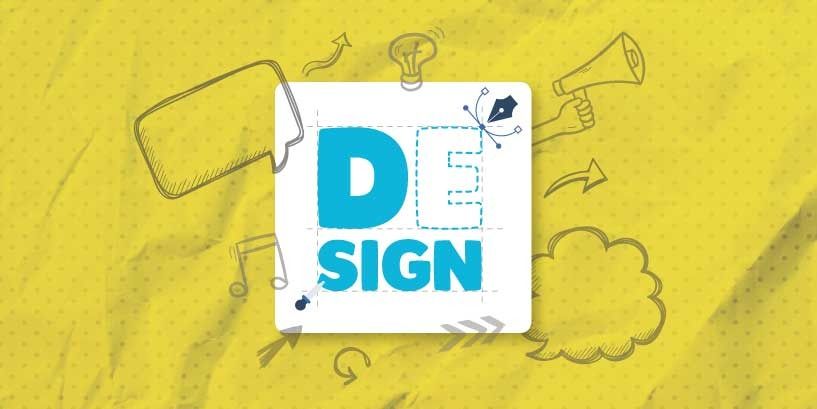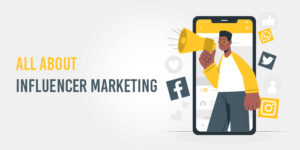Can a Design tell a story?
8 seconds.
That’s exactly how long a human’s attention span lasts. So, anything and everything that makes news nowadays are sole because it has intrigued the onlooker and persuaded them to stay hooked, increasing traffic. In the digital era, where everybody has an attention span less than a goldfish, how can we create something that stands out? Makes waves? The answer is simple, by utilizing the two most powerful concepts of art and language, i.e., design and copy.
Today, let’s explore the world of graphic design and its role in effective communication!
Let’s address the fact of the importance of design. According to a research, a design has a deep impact on our lives. Everything that we are surrounded by, things that we perceive using our 5 senses, i.e., things that we see, touch, feel etc., are all products of design; an outcome of our elevated ideas. Unknowingly, we are constantly influenced by it.
Now, let’s talk business. How does design help in creating an impact and also improve sales?
The most important aspect of a business is to capture consumer’s attention. Like mentioned earlier, with an attention span that’s lesser than that of a goldfish, the best way to gain it is by investing the ideas in effective design. There’s a popular saying, “All things are designed; few things are designed well.” And those are the designs that speak volumes. Let’s take a look at how our design can tell the audience our unique story!
1. Visuals create a connection with the viewers:
Ruled by a sedentary lifestyle, people are in dire need of something that instantly connects to them, lifts their mood and provides them with a sense of relevance. Colour captures attention. It is said that certain soothing and subtle colors help with a secretion of hormones that brings about a sense of calmness, in turn, increasing our retention regarding that design. For e.g., there is a reason why certain social networking sites use blue as their brand color, it’s likable to our brains.
2. A picture speaks a thousand words:
Though it may sound cliché, the effectiveness of this statement can’t be neglected. To back it up, the findings of a research say that, if you hear a piece of information, you are likely to remember only 10% of it, whereas a pictorial representation will help you remember it up to 65%. The human brain can process image 60000 times better than text. Hence, the more pictorial nuances your design has, the better rapport it’ll create with the audience.
But also remember, it’s better to keep your visuals simple. The purpose of visuals is to provide an easier way to understand the content. No one wants to see inception in visuals, instead invest in a new/different idea. The simple and easy approach is always a crowd puller.
3. Innovate:
Innovation in a design is like the icing on the cake, it adds more beauty and value to your design. Not to forget, it’s what distinguishes your design from the others; makes the deer stand out in a herd of sheep. The world has a plethora of ideas. Do not restrict yourselves to a particular style, break those boundaries. Create, recreate and then innovate! Like they say, things keep getting better and better when you continuously work on it. For e.g., The logo of Instagram is a camera.
The baby boomers and generation X have little clue of what Instagram is, but with the help of their new logo which, the message is clearer, that it is related to pictures. In a recent update, they have changed their logo into a more colorful one that catches one’s attention easily. Whether the update is worthy or not is secondary, what matters is that moment where it struck chords with the audience. Hence, it is important to keep the innovation machine up and running in order to expand the reach beyond a stipulated target audience.
4. Personalize
Every customer looks at the design with a generic mind. Studies say that customers buy a product in which they can relate to. The world as such is filled with problems, alike and different. There are many solutions to it as well, but your talent lies in your approach to establish yourself as the only solution provider. How do you do that? Simple, through design. When it has a personal touch, they seem more inclined towards it.
5. Introduce interesting demographics
As much as content is essential to plummet your message across to the design, a lot of content makes it exhausting for the audience to process. That’s when you’ve to thank lords for all the pie charts, histograms and bar charts, they weren’t invented to just test us academically. Information presented in these formats are easier to comprehend and understand. Provide the customers with a graph of your development, so that they are aware of what they have gotten into and can place their trust in you without a second thought.
6. Keep your design up to date
How would you like it if someone told you that you are repeating a particular dress too many times? Yes, you like it and it does look good on you. But after a few times, eventually even you will get bored of it, the colour fades away and you no longer want to wear it. The same can be said for a design, if you keep it monotonous, people will lose interest. It’s always better to keep altering it like I mentioned earlier, innovate. The designing world is constantly undergoing changes, always try to keep up with the current trend. Similarly, there’s a lot happening in our normal world as well, see if you can impart a little of it in your work as well. This will make you keep someone informed and at the same time interested. The best example would be, In shots – an innovative application that provides current affairs through pictures.
To sum it, in the words of Paul Rand, ‘Design can be art; design can be simple. That’s why it’s complicated.’ The challenge doesn’t lie in the intricacies of your design, it lies in how well it conveys the message to the audience. Until then, the purpose isn’t solved and the journey of your design lives on!




